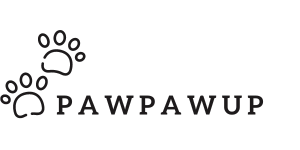Why dog toys matter in real life
A good dog toy isn’t just cute—it’s a tool. The right chew or puzzle can burn energy, calm nerves, protect your sofa, and even support dental hygiene. Daily, bite-sized enrichment prevents boredom and stress-based chewing. We rotate toy types—chew, fetch, tug, sniff/puzzle—so your dog’s brain and body both get a workout. (Tip: watch what your dog naturally does in downtime: gnawing, nose-work, or seeking tug. Let that habit guide your shortlist.)
How to choose the right dog toy (start with your dog, not the shelf)
Use this simple checklist: Age, Size, Chew Style, and Energy Level. Puppies need softer textures and simple puzzles; adults with strong jaws need dense rubber or woven rope; seniors often prefer lighter fetch toys and gentler chews. Size matters more than design—small balls for small breeds, large balls for large breeds—so nothing can be swallowed. Match your dog’s play style: a power chewer gets a solid rubber chew; a scent-driven dog thrives on snuffle mats or food-dispensing toys; a fetch addict wants aerodynamic balls or flyer discs.

Safety rules most people forget
1) Size-to-muzzle fit: choose toys too large to lodge behind the molars and always bigger than the windpipe diameter.
2) Inspect weekly for tears, split seams, and exposed squeakers; retire damaged toys immediately.
3) Supervise new toys the first few sessions—especially anything with fabric, rope frays, or squeaks.
4) Rotate toys every few days to keep interest high and reduce destructive chewing impulses.
What the experts say (evidence-based picks)
The ASPCA recommends offering plenty of your dog’s own chew items and rotating them every couple of days to prevent boredom. That small routine change is one of the highest‑leverage habits you can implement. The American Animal Hospital Association (AAHA) also highlights enrichment as a proven way to reduce stress and prevent problem behaviors—think puzzle feeders, sniff games, and short, daily training games.
Common buying mistakes (and easy fixes)
• Buying by cuteness, not function: Pick for your dog’s jaw strength and style first.
• Ignoring materials: Look for durable rubber, tightly braided rope, or thick, stitched fabric.
• Wrong size balls and tug toys: always size up if in doubt.
• No rotation plan: even the best dog toy loses novelty—keep a small bin out and a larger stash for weekly swaps.
• Expecting toys to ‘babysit’: use toys to guide behavior, but stay involved—two minutes of tug with release cues teaches manners fast.
Quick match guide: dog types → toy types
• Puppies (teething): softer rubber chews you can chill; shallow puzzle trays.
• Power chewers: dense rubber chews without small parts; thick rope tugs (inspect for fray).
• Nose‑work lovers: snuffle mats, treat balls, and hide‑and‑seek plush with removable pouches.
• Fetch fanatics: oversized, high‑bounce balls or discs; avoid undersized tennis balls for big breeds.
• Seniors: lightweight plush or foam fetchers; gentle rubber chews that don’t stress teeth.
How to use a dog toy for real behavior wins
Think in micro‑sessions: 3–5 minutes, a few times a day. Before you open your laptop, scatter a handful of kibble into a puzzle feeder. When visitors arrive, give a stuffed chew to lower arousal. Between video calls, do 10 quick tug reps with a clear ‘take it/drop’ routine—your dog learns impulse control while burning energy. If your dog fixates on chewing furniture, redirect to a chew and pay big when they choose it on their own.
Safety checklist (print this)
• Right size: larger than your dog’s windpipe and not compressible to a choke shape.
• Material: no splinters; avoid brittle plastics.
• Construction: double‑stitched seams; hidden or reinforced squeakers.
• Supervision: especially for new or edible chews.
• Retire & replace: once torn, frayed, or de‑stuffed.
• Rotate: every 2–3 days to keep engagement high.

Ready to upgrade your dog’s play?
Browse our curated dog toy range at PawPawUp. We hand‑pick durable, enrichment‑forward designs, and ship Australia‑wide. While you’re there, check out our travel‑friendly cat carrier and super‑comfy cat bed. Your dog (and your furniture) will thank you.

